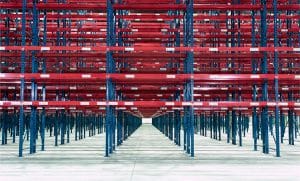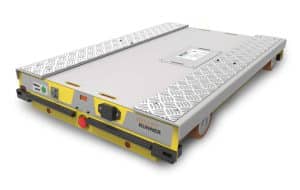As 3PLs See Rising Demand for Services, Operators Seeking Greater Density and Productivity
Posted on May 3, 2024
The growth of online commerce and the related expectation among consumers for quick delivery continues to place demands on 3PL providers to optimize throughput and the overall productivity of their fulfillment centers.
While 3PL operators are engaging technology, data analytics, flexibility and other enhancements, their facilities still need systems to store merchandise and make it readily available for shipping. Those systems are primarily steel racking, with the type dependent on the kinds of product being handled and how products are handled. In any case, 3PLs need racking systems that are scalable, reliable and that allow for efficient management of and access to high SKU counts.
Flexibility is one of the key aspects, as contracts with outsourced warehousing are commonly limited in their number of years, and since a single warehouse could need to handle many different customer needs. They also need to be ready to scale their services up or down, based on demand fluctuations.
 Selective Racking Commonly Used in 3PLs
Selective Racking Commonly Used in 3PLs
Where 3PLs handle last-mile or other fulfillment services, selective racking – where users select the location for each pallet, allowing direct access to each pallet, and carton flow racking – which moves cartons or totes to the front position via gravity, are commonly used. These systems can accommodate numerous and various SKUs, and which can be designed so quicker-selling SKUs can be accessed the fastest. Another advantage of selective racking is the easy ability to adjust elements of the racking to accommodate different pallet sizes. These systems also can be designed to have easily accessible picking levels and pallet loads at upper levels.
Selective racking, however, requires more aisles to provide direct access to pallets and quick picking of all the SKUs. With selective racking alone, the ability to store large volumes of an SKU is limited.
When even denser storage is needed – especially for the same SKUs, dynamic racking such as drive-in and drive-through racking can be a good solution. These systems allow forklifts to drive directly into a rack’s bays. Drive-in racking offers last-in, first-out (LIFO) inventory management, while drive-through racking provides first-in, first-out (FIFO) inventory management.
Other dense storage options for 3PLs include push back racking and pallet flow racking. With push back racking, when a new pallet load is added, the existing pallet load is pushed back, providing storage density but usually suitable for products that don’t have short shelf lives. Pallet flow systems are ideal for product rotation by having a FIFO aspect. But that requires forklift access on both sides – one to position pallets and another to remove them.
Steel King offers a variety of the above racking types, each used in 3PL facilities to provide storage and availability for different product types, and to meet seismic considerations.
 Semi-Automation Supports Dense Storage in 3PLs
Semi-Automation Supports Dense Storage in 3PLs
For larger scale 3PLs, a semi-automated solution, such as a pallet shuttle system, supports increased storage and greater utilization of the cube. When a facility’s need for pallet positions gets to around 1,200, switching from selective or dynamic racking to racking with a shuttle system can be a good investment.
With these systems, such as Autohma America’s Pallet Runner, pallets are loaded/pocketed from a single drop position, and the shuttle then automatically moves them in and out of deep, high-density storage lanes. Forklift travel time is thus reduced. The shuttle can be directed to handle pallets in ether a FIFO or LIFO mode. Automated pallet handlers also help 3PL operators deal with labor shortages, increase accuracy of product selection, and reduce the risk of forklift-related damage to racking.
Since Pallet Runner shuttles operate in temperatures down to -22, they can be used in cold storage facilities as well as in ambient air environments.
Steel King can turn-key-design pallet racking with the Pallet Runner semi-automated system to help your 3PL operation handle more product without necessarily using more labor or expanding your facility’s footprint.
